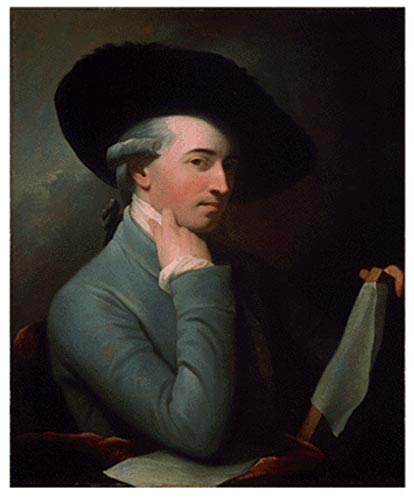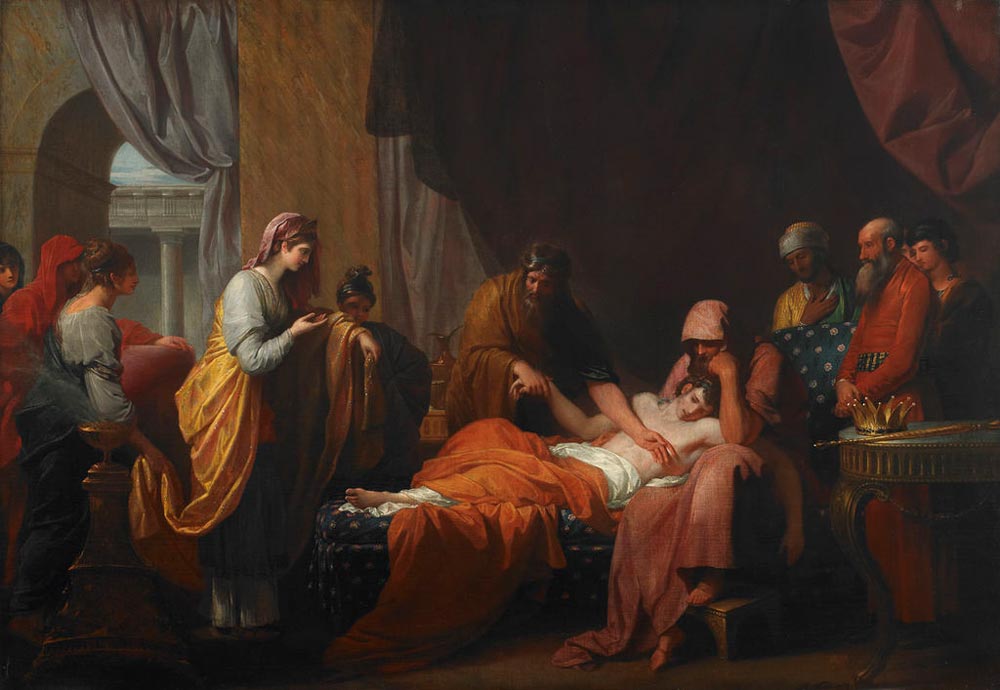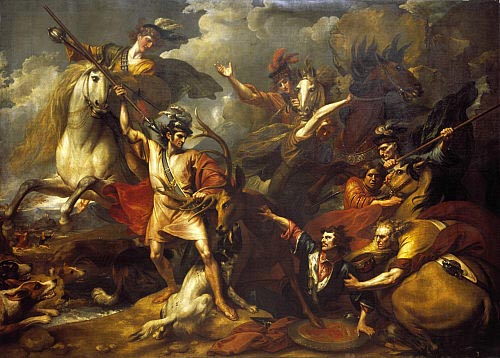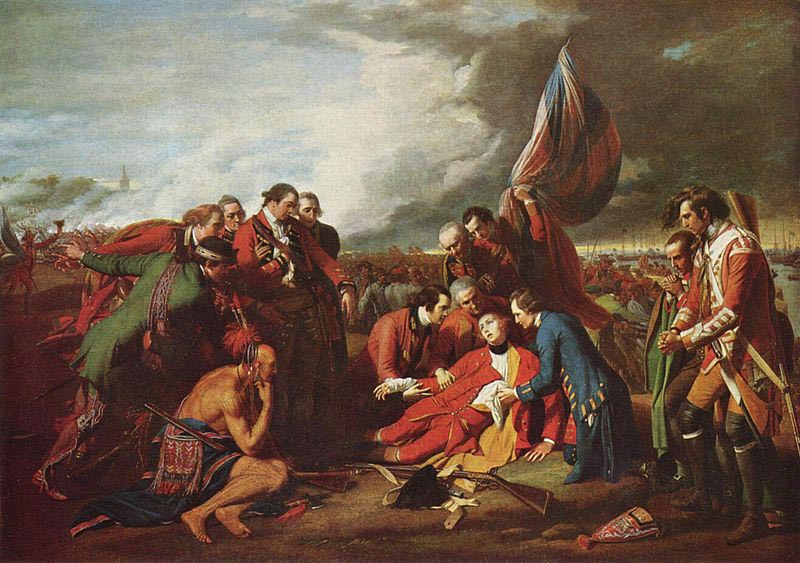| Benjamin West | |
|---|---|
 |
|
| Born | Oct. 10, 1738 Springfield, Pennsylvania |
| Died | Mar. 11, 1820 (at age 81) London |
| Nationality | American |
| Field | Historical painting |
| Works | View Complete Works |
Known as the father of American painting and the Raphael of America, Benjamin West (1738-1820) created an iconic style in his paintings of historical, landscape, and religious subjects. West was the first American artist who was able to gain international fame from his classical, high style, large-scale, historic paintings in oil on canvas. Although his subjects and style were somewhat controversial to some people of his time, West’s art and respect for antiquity became admired, studied, and imitated in later times.
Beginnings
Born in Springfield, Pennsylvania, Benjamin West was the tenth child of a Quaker innkeeper and tavern proprietor. Having a talent for the art of sketching, West was a self-taught artist with very little formal education. He learned by doing and listening to other artists. The Native Americans first showed West how to paint by mixing clay from the river bank with bear grease. West began his career in Pennsylvania painting portraits from 1746 to 1759.
William Henry, an American gunsmith and delegate for the Continental Congress from Pennsylvania, took an interest in West, and encouraged him to design the painting Death of Socrates. The chancellor of the College of Philadelphia, William Smith, saw this painting and offered West an art education and connections to very wealthy patrons. West later met John Wollaston, a painter from London, and refined his techniques of producing shimmering effects with paint and almond-shaped eyes, characteristic of his subjects.
 In 1760, William Allen (a wealthy merchant, Chief Justice, and Mayor of Pennsylvania) and William Smith sponsored West’s travel to Italy, where he learned the painting techniques of the masterful Italian artists Titian and Raphael. While living in Italy for the next three years, he became acquainted with neo-classical influences before settling in London in 1763. In 1764, West placed his first painting done in England, Angelica and Medoro, and his Rome painting, Cymon and Iphigenia, in an exhibition in Spring Gardens, where they gained much attention. The following year, he married Elizabeth Shewell, a fellow American.
In 1760, William Allen (a wealthy merchant, Chief Justice, and Mayor of Pennsylvania) and William Smith sponsored West’s travel to Italy, where he learned the painting techniques of the masterful Italian artists Titian and Raphael. While living in Italy for the next three years, he became acquainted with neo-classical influences before settling in London in 1763. In 1764, West placed his first painting done in England, Angelica and Medoro, and his Rome painting, Cymon and Iphigenia, in an exhibition in Spring Gardens, where they gained much attention. The following year, he married Elizabeth Shewell, a fellow American.
 In 1768, King George III became a patron of West’s. They had discussions about how to promote the creation and appreciation of the visual arts through education, leading to the establishment of a Royal Academy of Arts in London. In 1792, West became the president of the Royal Academy, and he was also the historical painter appointed to the court as well. Benjamin West died in 1820 at his Newman Street home in London. He was later buried in St. Paul’s Cathedral. His revered works of art are today displayed in fine art museums in Philadelphia, London, Brooklyn, and Chicago.
In 1768, King George III became a patron of West’s. They had discussions about how to promote the creation and appreciation of the visual arts through education, leading to the establishment of a Royal Academy of Arts in London. In 1792, West became the president of the Royal Academy, and he was also the historical painter appointed to the court as well. Benjamin West died in 1820 at his Newman Street home in London. He was later buried in St. Paul’s Cathedral. His revered works of art are today displayed in fine art museums in Philadelphia, London, Brooklyn, and Chicago.
Famous Works
 The Death of General Wolfe was one of West’s most famous and influential works of art. Painted in 1771, it depicted the British General’s death during the Battle of Quebec, in 1759, during the Seven Years’ War. In 1806, West painted The Death of Nelson, commemorating Horatio Nelson’s death, at the Battle of Trafalgar in 1805. During the 1770’s, West painted eight large canvases in oil, depicting scenes from the life of Edward III for the Windsor Castle.
The Death of General Wolfe was one of West’s most famous and influential works of art. Painted in 1771, it depicted the British General’s death during the Battle of Quebec, in 1759, during the Seven Years’ War. In 1806, West painted The Death of Nelson, commemorating Horatio Nelson’s death, at the Battle of Trafalgar in 1805. During the 1770’s, West painted eight large canvases in oil, depicting scenes from the life of Edward III for the Windsor Castle.
West used expressive composition, colors, and figures in a large scale, which he termed epic representation. This was to help the viewer of his art to identify more with the scene and the monumental time in history.